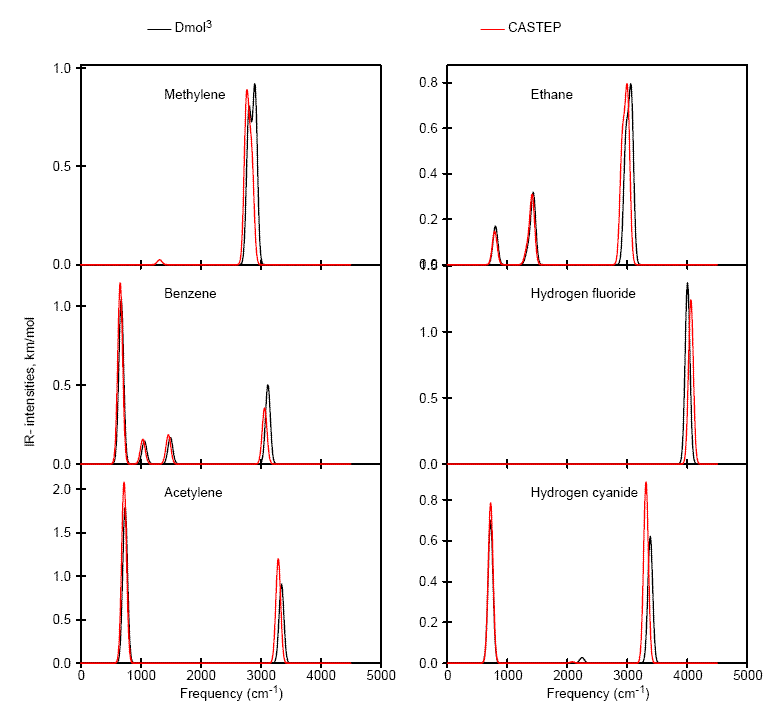Infrared spectra
In the infrared energy range (typically below 1 eV), vibrations are an important component of optical spectra. In the case of metals, this process is screened considerably by the plasmon (intraband) electronic contribution, while for semiconductors and insulators, it is vibrations that are mainly responsible for absorbing light energy.
Theoretically, infrared absorption intensities are described in terms of a dynamical matrix (also known as a Hessian) and Born effective charges (also known as atomic polarizability tensors, ATP). The Born effective charge tensor of an ion is the partial derivative of the macroscopic polarization with respect to a periodic displacement of all the periodic images of that ion at zero macroscopic electric field. A good review of the practical methods of dealing with this effect is given by Baroni et al. (2001). The Born effective charge tensor is calculated within the linear response formalism by applying a Gonze approximation. Once these data are known, it is straightforward to calculate IR intensities (see Calculating vibrational frequencies). IR absorption intensities are printed in the CASTEP output file for any run where phonons at the Γ-point and LO-TO splitting are calculated.
The concept of IR absorption intensities is mostly used in the analysis of molecules. CASTEP can be used to model isolated molecules if the molecule in question is assumed to be contained within a box (see Setting up a calculation on an isolated molecule. This approach allows accurate prediction of IR absorption intensities. Figure 1 compares the results of such calculations obtained using DMol3 and CASTEP for a variety of molecules.

Figure 1. Comparison of IR spectra calculated using DMol3 and CASTEP for a range of molecules